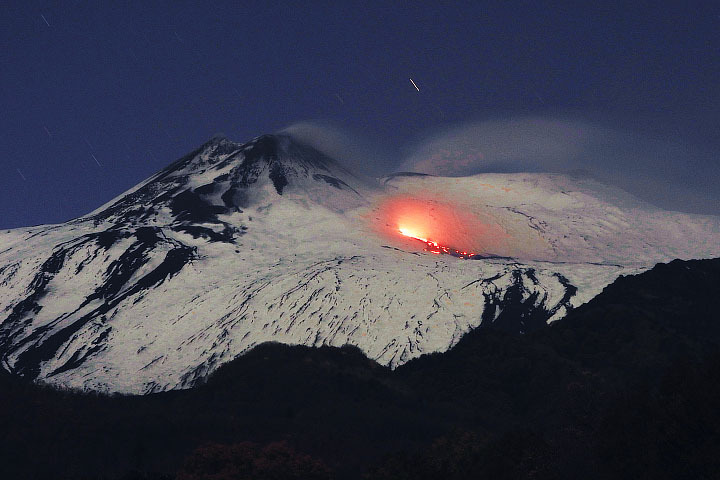

Dust briefly clouded the skies over Sicily in early December 2022, yet the Italian island’s iconic volcano still managed to put on a show.
On December 7, 2022, the Moderate Resolution Imaging Spectroradiometer (MODIS) on NASA’s Terra satellite acquired this natural-color image of dust blowing over the Mediterranean Sea and southern Italy. The dust originated in the Sahara Desert, carried by southerly winds known as the scirocco. (In North Africa, these same desert winds are known as “chrom” (hot) or “arifi” (thirsty)). The warm, dry air mass picks up moisture over the Mediterranean as it moves north toward areas of lower pressure. The systems usually produce fog or light rain, which can combine with the dust and fall as mud.
The scirocco on December 7 failed to deliver any rain to Sicily, and skies that day stayed quite dusty, according to Boris Behncke, a volcanologist at the Istituto Nazionale di Geofisica e Vulcanologia. The thick haze obscured Behncke’s ground-based view of Mount Etna, 20 kilometers (12 miles) away. However, a close look at the satellite image reveals a snowcapped peak surrounded by a “halo” of clear air. Behncke thinks this suggests that the dust was relatively low in altitude.
An even closer look reveals evidence of Mount Etna’s volcanic nature. Notice the thin plume of gas—mostly water vapor—streaming from the volcano toward the southeast. “This gas is being emitted from the summit craters, and is practically going on all the time,” Behncke said. “Etna is one of the most vigorously degassing volcanoes on the planet.”

Meanwhile, a small eruption has been ongoing at Mount Etna since November 27, 2022. The lava is not visible in the natural-color satellite image on this page, but it has been detected with sensors on the Sentinel-2 and Landsat satellites that can make observations in the infrared. The photograph above, shot by Behncke on December 4, shows the view from Fornazzo, a village just east of the volcano. At the time, lava oozing from a vent had flowed a few hundred meters down the mountain’s east flank.
Another eruption was ongoing at Stromboli, a volcanic island located about 64 kilometers (40 miles) north of Sicily. However, any view of the island in this image (top) is completely obscured by dust.
NASA Earth Observatory image by Joshua Stevens, using MODIS data from NASA EOSDIS/LANCE and GIBS/Worldview. Photo by Boris Behncke/INGV-Osservatorio Etneo (Catania). Story by Kathryn Hansen.